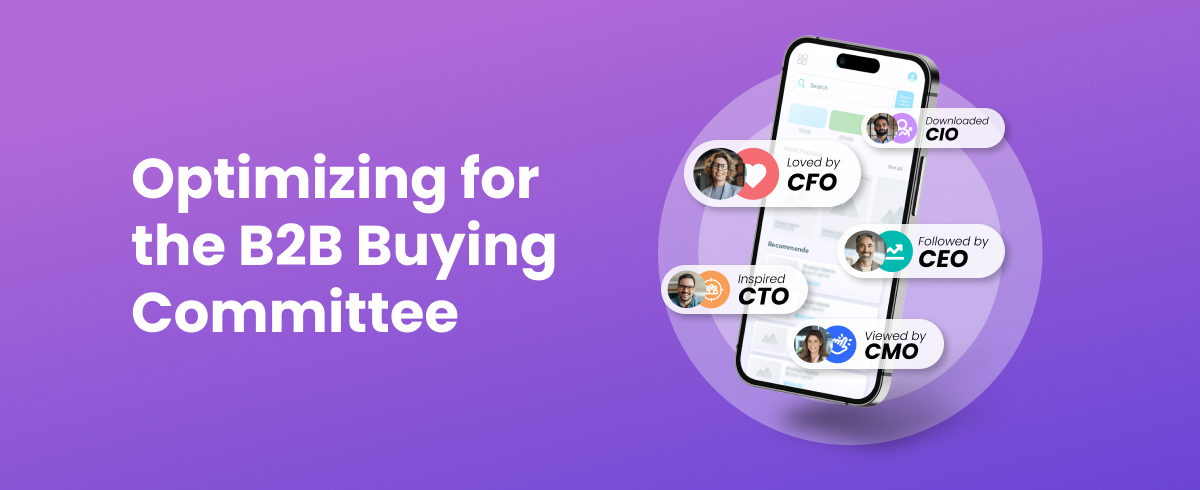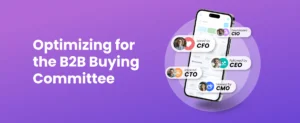Unlike B2C optimization, where you are typically speaking to one person, B2B optimization requires a fundamentally different approach. You’re not just selling to a company, you’re selling to a diverse group of individuals within that company, each with their own motivations and pain points.
The typical B2B buying committee includes economic buyers who control the budget, technical evaluators who assess functionality, champions who advocate internally, procurement leads who negotiate terms, and end-users who will actually interact with your solution. Each of these stakeholders approaches your website with different questions, concerns, and success metrics in mind.
The Test What Matters Framework
Effective B2B optimization starts with a structured approach to understanding your audience. “The Test What Matters framework provides a systematic way to identify customer segments, map journeys, and pinpoint critical touchpoints”, explains John Wilkes, Co-Founder at Somebody Digital.
This framework moves beyond generic website experiences that treat all visitors the same. Instead, it recognizes that a CFO researching ROI data needs different information than a technical architect evaluating integration capabilities, even when they’re part of the same buying process.
The Power of Behavioral Segmentation
One of the most powerful tools in B2B optimization is behavioral segmentation. By tracking which pages visitors view and how long they spend on them, you can infer their role in the buying committee and tailor their experience.
This approach allows you to move beyond demographic assumptions and instead respond to actual behavior patterns. When you can identify that someone is spending significant time in your technical documentation section, you can present them with more detailed integration guides, API documentation, and technical case studies rather than high-level marketing messaging.
Breaking Down Journey Friction
B2B buying journeys are inherently complex, often involving multiple touchpoints across extended timeframes. A critical component of optimization involves mapping these journeys to identify friction points where potential buyers might get stuck, confused, or disengaged.
Common friction points include generic content that doesn’t speak to specific roles, unclear navigation that makes it difficult to find relevant information, and missing content that addresses the specific concerns of different stakeholders. “By systematically identifying and addressing these friction points, you can create smoother paths to conversion for each member of the buying committee”, Wilkes adds.
Data-Driven Decision Making
Successful B2B optimization relies heavily on data to understand user behavior patterns. Tools like Salesforce for tracking lead progression and ContentSquare for analyzing on-site behavior provide the insights needed to make informed optimization decisions.
This data-driven approach helps you to understand not just what’s happening on your website, but why it’s happening and how it relates to actual business outcomes. Wilkes emphasizes that “when you can connect website behavior to sales results, you can prioritize optimization that has the greatest impact on revenue.”
Moving Beyond Brand to Sales Enablement
Many B2B websites fall into the trap of focusing primarily on brand messaging rather than sales enablement. While brand is important, your website should serve as a powerful tool for moving prospects through their buying journey, providing the specific information and resources that different stakeholders need to make informed decisions.
This might mean creating detailed ROI calculators for economic buyers, comprehensive technical documentation for evaluators, or implementation timelines for end-users. “Each piece of content should serve a specific purpose in advancing the buying process,” adds Wilkes.
Implementing a Customer-Centric Approach
Ultimately, successful B2B optimization requires putting the customer and their complex decision-making process at the center of your strategy. This means taking the time to truly understand the different personas within your target accounts, their individual motivations and concerns, and how they interact with each other throughout the buying process.
By adopting this customer-centric mindset and implementing a structured framework for optimization, B2B organizations can create website experiences that not only attract prospects but also effectively guide entire buying committees toward confident purchase decisions. Wilkes underlines that “In today’s competitive B2B landscape, this level of sophistication isn’t just an advantage, it’s a necessity.”
FAQs
1. What makes B2B website optimization different from B2C optimization? B2B optimization requires addressing multiple stakeholders within buying committees, including economic buyers, technical evaluators, champions, procurement leads, and end-users, each with different motivations and success metrics. Unlike B2C where you typically optimize for individual consumers, B2B requires complex journey mapping across extended timeframes.
2. What is the Test What Matters framework for B2B optimization? The Test What Matters framework provides a systematic approach to identify customer segments, map complex buying journeys, and pinpoint critical touchpoints where optimization can have the greatest impact on revenue generation.
3. How does behavioral segmentation improve B2B website performance? Behavioral segmentation allows you to track visitor page views and engagement patterns to infer their role in the buying committee and deliver tailored content experiences. This moves beyond demographic assumptions to respond to actual behavior patterns.
4. What are the most common friction points in B2B buying journeys? Common friction points include generic content that doesn’t address specific stakeholder roles, unclear navigation, making it difficult to find relevant information, and missing content that fails to address the concerns of different buying committee members.
5. How should B2B websites move beyond brand messaging to sales enablement? Successful B2B websites should serve as powerful sales tools by providing specific resources like ROI calculators for economic buyers, technical documentation for evaluators, and implementation timelines for end-users. Each content piece should advance the buying process.
6. What data should B2B companies track for optimization decisions? Companies should use tools like Salesforce for lead progression tracking and ContentSquare for on-site behavior analysis to connect website behavior to actual sales results. This enables prioritizing optimizations with the greatest revenue impact.
7. What are typical B2B website conversion rates? B2B conversion rates typically vary between 1% to 5%, with industry research showing that only 2% of B2B website visitors become leads on average.
8. How can B2B companies implement customer-centric optimization? Successful implementation requires understanding different personas within target accounts, their individual motivations and concerns, and how they interact throughout the buying process. This involves creating structured frameworks for mapping journeys and addressing friction points systematically.




